Lenovo Yoga 7 (14″, 2022) review
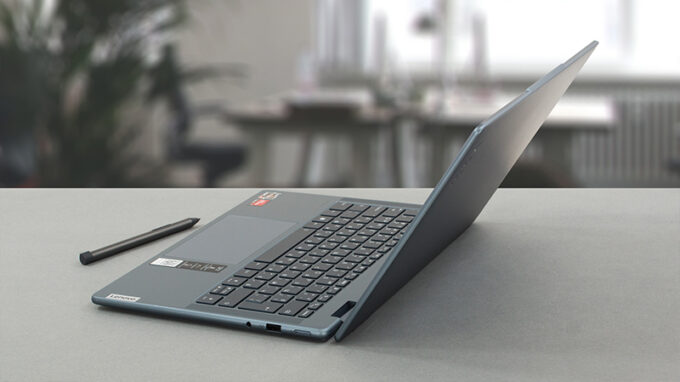 We have spent some time with the Yoga 7 (14″, 2022) and we’re really excited to share our review with you. This is the AMD version of the device, so if you’re interested in the Intel model, check out the review we have of the Yoga 7i (14″, 2022).
We have spent some time with the Yoga 7 (14″, 2022) and we’re really excited to share our review with you. This is the AMD version of the device, so if you’re interested in the Intel model, check out the review we have of the Yoga 7i (14″, 2022).
Obviously, the main difference between the two will be the processor. Interestingly, AMD spent a suspiciously long time before shipping the Ryzen 6000U series to the public. Actually, this is our first proper taste of it, months after we checked the more powerful 45W version.
We expect to see a good performance bump over last year, but mainly in the graphics department. Due to the RDNA2 integrated GPU, the Yoga 7 (14″, 2022) should be close enough to some gaming machines, that are no more than three years old. This will be further aided by the fact that Lenovo uses LPDDR5 RAM, clocked at the fantastic 6400MHz.
For this year, you also get an OLED display panel option with a 2.8K resolution, 16:10 aspect ratio, and a 90Hz refresh rate.
You can check the prices and configurations in our Specs System: https://laptopmedia.com/series/lenovo-yoga-7-14-2022/
Contents
Specs Sheet
- HDD/SSD
- up to 1000GB SSD
- M.2 Slot
- 1x 2280 M.2 PCIe 4.0 x4 See photo
- RAM
- up to 32GB
- OS
- Windows 11 Home, Windows 11 Pro
- Battery
- 71Wh
- Body material
- Aluminum
- Dimensions
- 316.66 x 220.25 x 17.35 mm (12.47" x 8.67" x 0.68")
- Weight
- 1.42 kg (3.1 lbs)
- Ports and connectivity
- 1x USB Type-A
- 3.2 Gen 1 (5 Gbps), Sleep and Charge
- 1x USB Type-C
- 3.2 Gen 2 (10 Gbps), Power Delivery (PD), DisplayPort, Sleep and Charge
- 1x USB Type-C
- 4.0, Power Delivery (PD), DisplayPort
- HDMI
- 2.0
- Card reader
- MicroSD
- Ethernet LAN
- Wi-Fi
- 802.11ax
- Bluetooth
- 5.2
- Audio jack
- 3.5mm Combo Jack
- Features
- Fingerprint reader
- Web camera
- FHD
- Backlit keyboard
- Microphone
- Dual Array Microphone with Noise Cancellation, far-field, support for Lenovo Voice Assistant
- Speakers
- 4x 2W (2x woofers, 2x tweeters) Stereo Speakers, Smart Amplifier, Dolby Atmos
- Optical drive
All Lenovo Yoga 7 (14″, 2022) configurations
What’s in the box?
Inside the packaging, we found some paperwork, as well as a 65W USB Type-C charger. In addition, you get an optional Lenovo Digital Pen with 4096 levels of pressure sensitivity and a replaceable AAAA battery.
Design and construction
As soon as you take this laptop out of its box, you will have an understanding of its fantastic build quality. It is made entirely out of aluminum, has smooth curved edges, and is extremely resistant to flex.
It has a profile of 17.35mm and weighs 1.42 kg with the OLED panel, and 1.45 kg when it has an IPS display. One of the reasons for the lid’s exceptional rigidity is the glass cover, protecting the display.
Unfortunately, you won’t be able to open the lid with a single hand. Otherwise, you see great stuff there, including a Full HD Web camera with an IR face recognition sensor and a privacy shutter. In addition, the bezels around the display are pretty thin, while the backside of the lid features two tiny rubber feet, which gently lift the device after a certain angle. However, this angle is way too wide for this feature to be useful.
By the way, we feel that the display works really well with the included Pen. The quick pixel response times inherent to the OLED panel are very useful in this case.
Moving to the base, we find a very clean-looking setup. The keyboard has a speaker on either side. They are part of a quad-speaker setup, with the two other cutouts being placed on the bottom panel. As for the keyboard itself, it comes with a backlight, decent key travel, and clicky feedback. Yes, this makes it really comfortable for work.
In addition, the touchpad sports a glass cover, which offers a super smooth gliding experience. This pairs very well with accurate tracking and quick response.
Looking at the bottom panel shows a ventilation grill, which provides cool air to the single fan inside. Heat exhaust, on the other hand, happens through a vent on the back of the base.
Ports
On the left side of this notebook, you will find an HDMI 2.0 connector, followed by two USB Type-C ports – one 3.2 (Gen. 2) and one USB4. Lastly, there is a MicroSD card reader. And on the right, there is the power button, a USB Type-A 3.2 (Gen. 1) port, and an Audio jack. By the way, both the USB Type-C ports support Power Delivery and DisplayPort output.
Disassembly, upgrade options, and maintenance
To take this laptop apart, you need to undo 7 Torx-head screws. Then, pry the bottom panel with a plastic tool, and lift it away from the chassis.
Inside, we find a 71Wh battery pack. It lasts for 12 hours of Web browsing, or 12 hours and 30 minutes of video playback. To take it out, you need to unplug the battery connector and undo 5 Phillips-head screws.
Expectedly, the memory here is soldered to the motherboard. You can find the notebook in configurations with up to 32GB of LPDDR5 RAM, working at 6400MHz. Storage-wise, there is one M.2 PCIe x4 slot, which supports Gen 4 drives and fits either 42 or 80-mm SSDs.
Here, the processor is cooled by two heat pipes, a heat sink, and a fan. In addition, there is a heat spreader meant for the VRMs.
Display quality
Lenovo Yoga 7 (14″, 2022) is equipped with a 90Hz OLED panel, LEN140WQ+ (LEN8A98). Its diagonal is 14.0-inch (35.5 cm), and the resolution – 2880 x 1800p. Additionally, the screen ratio is 16:10, the pixel density – 243 ppi, and their pitch – 0.1 x 0.1 mm. The screen can be considered Retina when viewed from at least 36 cm (from this distance, the average human eye can’t see the individual pixels).

Viewing angles are comfortable. We offer images from different angles to evaluate the quality.
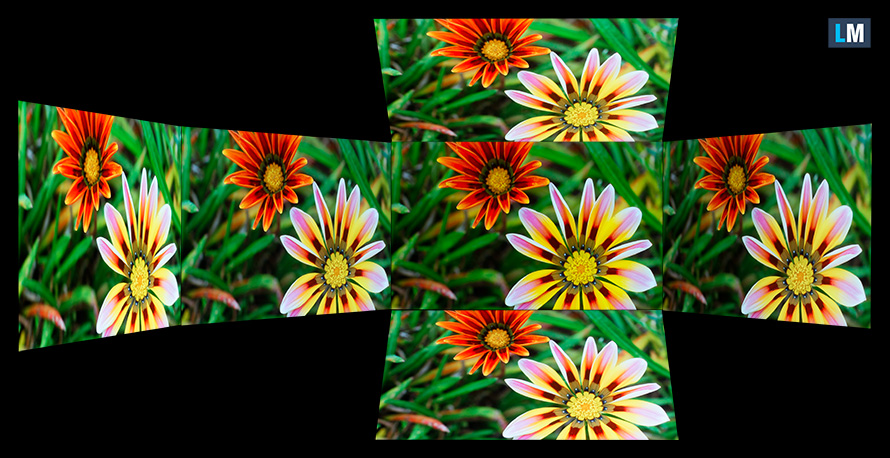
Also, a video with locked focus and exposure.
The maximum measured brightness is 380 nits (cd/m2) (HDR off) in the middle of the screen and 379 nits (cd/m2) as an average with a maximum deviation of only 2%. The Correlated Color Temperature on a white screen and at maximum brightness is 6300K – slightly warmer than the 6500K temperature for sRGB.
In the illustration below you can see how the display performs from a uniformity perspective.
Values of dE2000 over 4.0 should not occur, and this parameter is one of the first you should check if you intend to use the laptop for color-sensitive work (a maximum tolerance of 2.0 ). The contrast ratio here is incomparably better than that of the IPS and TN panels and is mathematically infinite.
To make sure we are on the same page, we would like to give you a little introduction to the sRGB color gamut and the Adobe RGB. To start, there’s the CIE 1976 Uniform Chromaticity Diagram that represents the visible specter of colors by the human eye, giving you a better perception of the color gamut coverage and the color accuracy.
Inside the black triangle, you will see the standard color gamut (sRGB) that is being used by millions of people on HDTV and on the web. As for the Adobe RGB, this is used in professional cameras, monitors, etc for printing. Basically, colors inside the black triangle are used by everyone and this is the essential part of the color quality and color accuracy of a mainstream notebook.
Still, we’ve included other color spaces like the famous DCI-P3 standard used by movie studios, as well as the digital UHD Rec.2020 standard. Rec.2020, however, is still a thing of the future and it’s difficult for today’s displays to cover that well. We’ve also included the so-called Michael Pointer gamut, or Pointer’s gamut, which represents the colors that naturally occur around us every day.
The yellow dotted line shows Lenovo Yoga 7 (14″, 2022)’s color gamut coverage.
Its display covers 100% of the sRGB/ITU-R BT.709 (web/HDTV standard) in CIE1976 and 100% of DCI-P3 providing a punchy and vibrant image (HDR off).
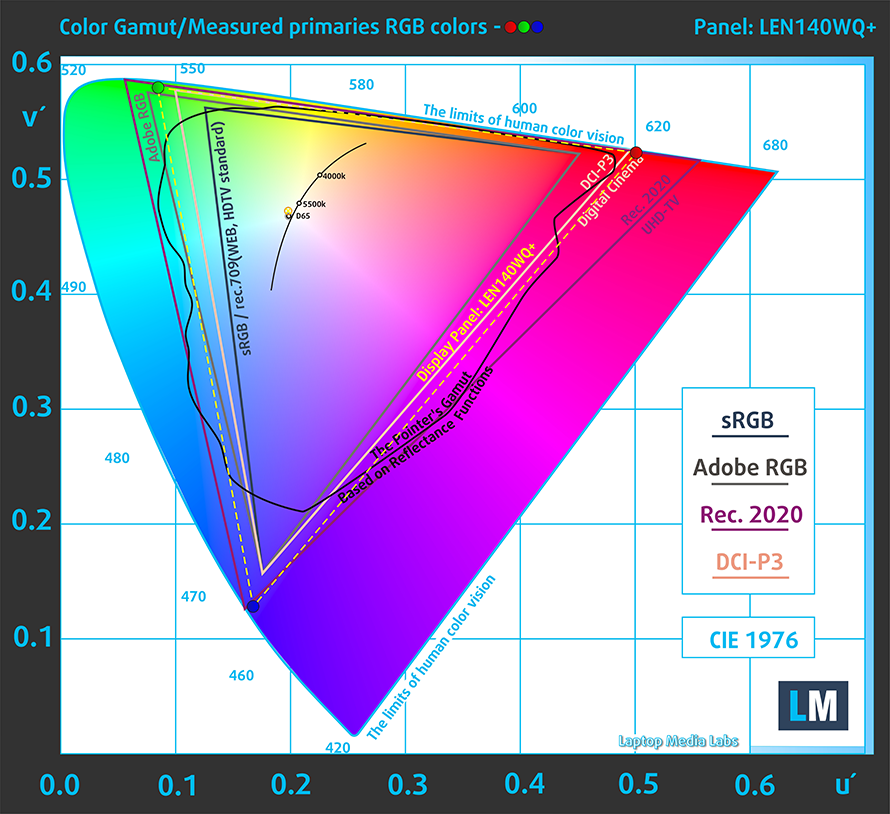
We tested the accuracy of the display with 24 commonly used colors like light and dark human skin, blue sky, green grass, orange, etc.
Below you can compare the scores of the Lenovo Yoga 7 (14″, 2022) against the P3-D65 standards (HDR off).
We also tested it in sRGB mode (HDR off).
The next figure shows how well the display is able to reproduce really dark parts of an image, which is essential when watching movies or playing games in low ambient light.
The left side of the image represents the display with stock settings, while the right one is with the “Gaming and Web Design” profile activated. On the horizontal axis, you will find the grayscale, and on the vertical axis – the luminance of the display. On the two graphs below you can easily check for yourself how your display handles the darkest nuances but keep in mind that this also depends on the settings of your current display, the calibration, the viewing angle, and the surrounding light conditions.
Response time (Gaming capabilities)
We test the reaction time of the pixels with the usual “black-to-white” and “white-to-black” method from 10% to 90% and vice versa.
We recorded Fall Time + Rise Time = 2 ms.
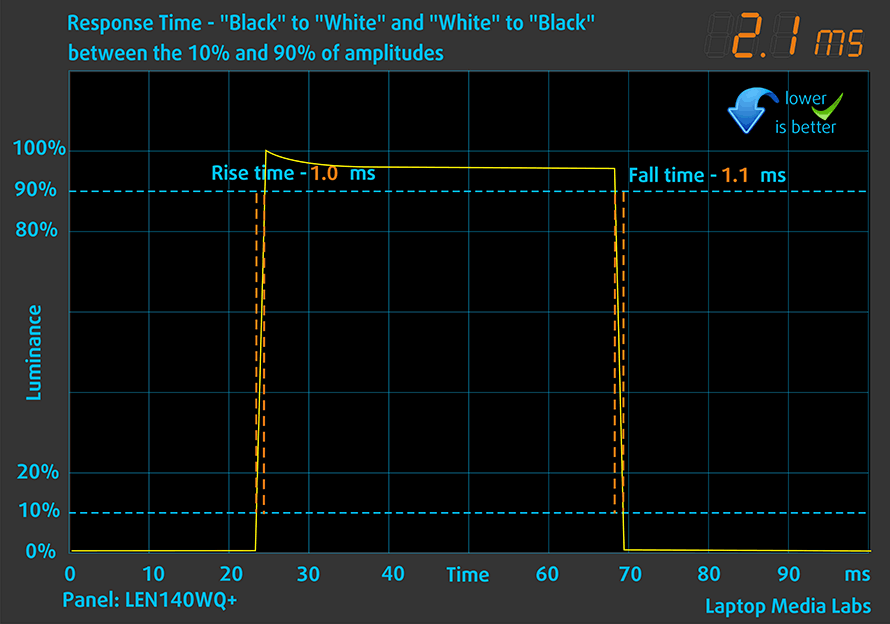
After that, we test the reaction time of the pixels with the usual “Gray-to-Gray” method from 50% White to 80% White and vice versa between 10% and 90% of the amplitude.
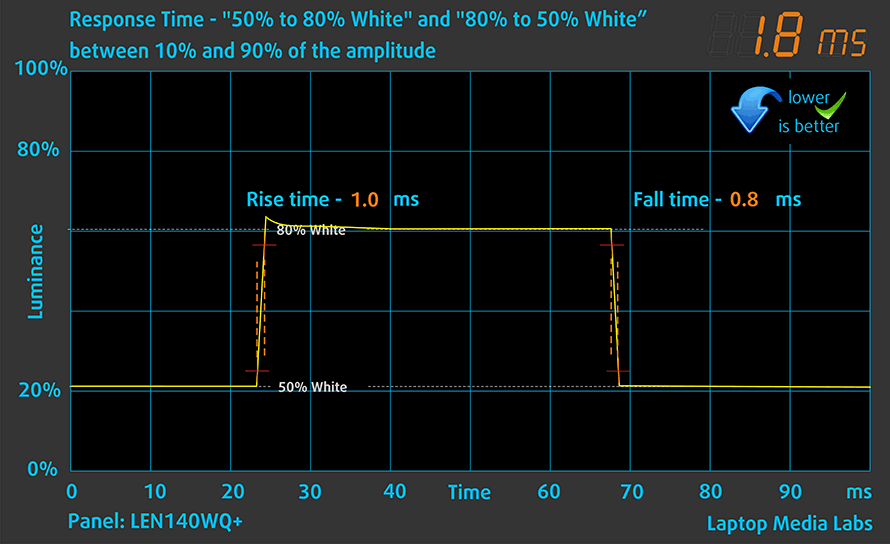
Health impact – PWM / Blue Light
PWM (Screen flickering)
Pulse-width modulation (PWM) is an easy way to control monitor brightness. When you lower the brightness, the light intensity is not lowered, but instead turned off and on by the electronics with a frequency indistinguishable to the human eye. In these light impulses, the light/no-light time ratio varies, while brightness remains unchanged, which is harmful to your eyes. You can read more about that in our dedicated article on PWM.
Unfortunately, Lenovo Yoga 7 (14″, 2022)s panel uses low-frequency PWM for luminance adjustment up to 90 nits. Afterwards, we detected small pulsations, which makes the display generally safe in this aspect (after 100 nits).
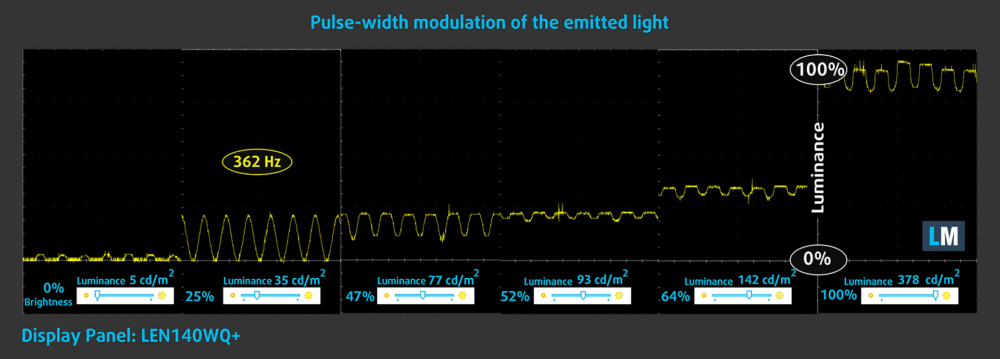
Blue light emissions
Installing our Health-Guard profile not only eliminates PWM but also reduces the harmful Blue Light emissions while keeping the colors of the screen perceptually accurate. If you’re not familiar with the Blue light, the TL;DR version is – emissions that negatively affect your eyes, skin, and your whole body. You can find more information about that in our dedicated article on Blue Light.
Gloss level measurement
Glossy-coated displays are sometimes inconvenient in high ambient light conditions. We show the level of reflection on the screen for the respective laptop when the display is turned off and the measurement angle is 60° (in this case, the result is 157 GU).
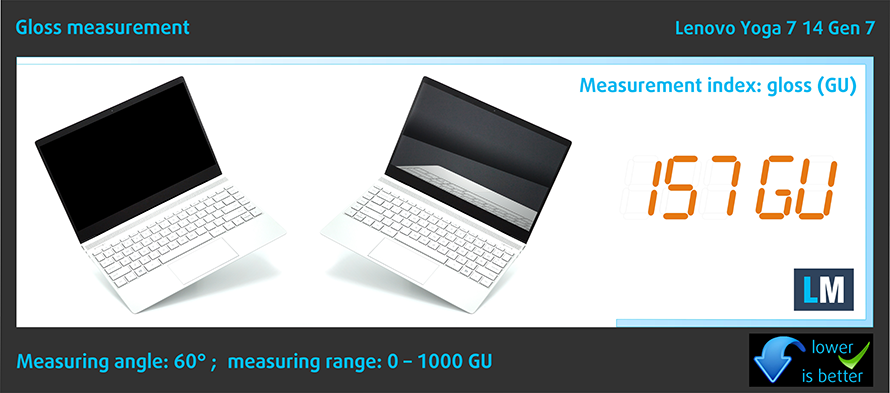
Buy our profiles
Since our profiles are tailored for each individual display model, this article and its respective profile package are meant for Lenovo Yoga 7 (14″, 2022) configurations with a 14.0″ LEN140WQ+ (LEN8A98) (2880 x 1800p) OLED panel.
*Should you have problems with downloading the purchased file, try using a different browser to open the link you’ll receive via e-mail. If the download target is a .php file instead of an archive, change the file extension to .zip or contact us at [email protected].
Read more about the profiles HERE.
In addition to receiving efficient and health-friendly profiles, by buying LaptopMedia's products you also support the development of our labs, where we test devices in order to produce the most objective reviews possible.

Office Work
Office Work should be used mostly by users who spend most of the time looking at pieces of text, tables or just surfing. This profile aims to deliver better distinctness and clarity by keeping a flat gamma curve (2.20), native color temperature and perceptually accurate colors.

Design and Gaming
This profile is aimed at designers who work with colors professionally, and for games and movies as well. Design and Gaming takes display panels to their limits, making them as accurate as possible in the sRGB IEC61966-2-1 standard for Web and HDTV, at white point D65.

Health-Guard
Health-Guard eliminates the harmful Pulse-Width Modulation (PWM) and reduces the negative Blue Light which affects our eyes and body. Since it’s custom tailored for every panel, it manages to keep the colors perceptually accurate. Health-Guard simulates paper so the pressure on the eyes is greatly reduced.
Get all 3 profiles with 33% discount
Sound
Lenovo Yoga 7 (14″, 2022)’s Dolby Atmos quad-speaker setup produces a sound of pretty good quality. Thankfully, the low, mid, and high frequencies have no deviation from clarity.

Drivers
All drivers and utilities for this notebook can be found here: https://pcsupport.lenovo.com/us/en/products/laptops-and-netbooks/yoga-series/yoga-7-14arb7/downloads/driver-list
Battery
Now, we conduct the battery tests with the Windows Better performance setting turned on, screen brightness adjusted to 120 nits, and all other programs turned off except for the one we are testing the notebook with. Our unit arrived with a 71Wh battery pack, which lasted for 12 hours and 10 minutes of Web browsing, or 12 hours and 43 minutes of video playback.
In order to simulate real-life conditions, we used our own script for automatic web browsing through over 70 websites.
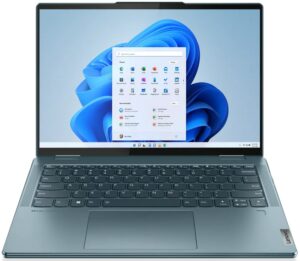

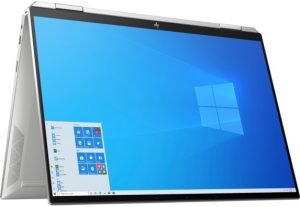
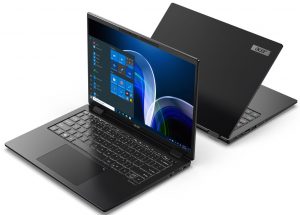
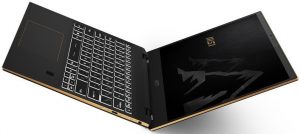
For every test like this, we use the same video in HD.





CPU options
This device is offered with the Ryzen 5 6600U, and the Ryzen 7 6800U.
Results are from the Cinebench R23 CPU test (the higher the score, the better)
Results are from our Photoshop benchmark test (the lower the score, the better)
GPU options
Respectively, the graphics cards you get are the integrated Radeon 660M, and Radeon 680M.
Results are from the 3DMark: Time Spy (Graphics) benchmark (higher the score, the better)
Results are from the 3DMark: Fire Strike (Graphics) benchmark (higher the score, the better)
Results are from the 3DMark: Wild Life benchmark (higher the score, the better)
Results are from the Unigine Superposition benchmark (higher the score, the better)
Gaming tests

| CS:GO | HD 1080p, Low (Check settings) | HD 1080p, Medium (Check settings) | HD 1080p, MAX (Check settings) |
|---|---|---|---|
| Average FPS | 166 fps | 133 fps | 106 fps |

| DOTA 2 | HD 1080p, Low (Check settings) | HD 1080p, Normal (Check settings) | HD 1080p, High (Check settings) |
|---|---|---|---|
| Average FPS | 146 fps | 115 fps | 81 fps |
Temperatures and comfort
Max CPU load
In this test we use 100% on the CPU cores, monitoring their frequencies and chip temperature. The first column shows a computer’s reaction to a short load (2-10 seconds), the second column simulates a serious task (between 15 and 30 seconds), and the third column is a good indicator of how good the laptop is for long loads such as video rendering.
Average core frequency (base frequency + X); CPU temp.
| AMD Ryzen 7 6800U (15W TDP) | 0:02 – 0:10 sec | 0:15 – 0:30 sec | 10:00 – 15:00 min |
|---|---|---|---|
| Lenovo Yoga 7 (14″, 2022) | 3.32 GHz @ 75°C @ 45W | 2.92 GHz @ 86°C @ 34W | 2.72 GHz @ 70°C @ 28W |
For this test, we used the Extreme performance preset from Lenovo’s Vantage app. We were impressed by the ability of the device to sustain a 28W power limit for this long and at a temperature of 70°C.
Comfort during full load
In addition, the machine was not too loud, despite the extreme workload scenario. As you can see, the warmest spot of the keyboard was not too hot either.

Verdict
 As it turns out, waiting for the Ryzen 6000U series was worth it. The Yoga 7 (14″, 2022) shows not only a great performance from its CPU but also from its integrated graphics card. And more than 12 hours of battery life is a great result, considering the fact that our unit was equipped with the 2.8K OLED panel.
As it turns out, waiting for the Ryzen 6000U series was worth it. The Yoga 7 (14″, 2022) shows not only a great performance from its CPU but also from its integrated graphics card. And more than 12 hours of battery life is a great result, considering the fact that our unit was equipped with the 2.8K OLED panel.
Speaking of which, Lenovo Yoga 7 (14″, 2022)’s touchscreen OLED display has a high resolution, and maximum brightness, as well as comfortable viewing angles, and a practically infinite contrast ratio. Its 90Hz refresh rate is paired with blazingly quick pixel response times, which results in a very smooth user experience. In addition, the panel covers 100% of the sRGB and 100% of the DCI-P3 color gamuts. This makes the image incredibly attractive to look at.
So far, the case for this machine is pretty solid. And its encasing is solid too. In fact, you are hardly going to be able to even twist its chassis. Apparently, CNC aluminum is a pretty strong material.
In addition, the input devices are on point. This includes the keyboard with its clicky feedback, the touchpad, with its glass surface and quick responses, and finally – the stylus. Not only do you get an optional Lenovo Digital Pen, but it is rather comfortable to hold. It has 4096 levels of pressure sensitivity – we started counting, but we got bored at 124 – we believe them.
Actually, using a stylus on an OLED panel (let alone one with a 90Hz refresh rate) is a breeze. Its super fast pixel-response times result in a very smooth operation, almost free of trailing. Add in the Full HD Web camera, privacy shutter, and IR face recognition scanner, and you get a full package placed on the forehead of the display.
As you may know, AMD laptops do not support Thunderbolt 4. However, you are offered the next best thing – USB4. It supports Power Delivery and DisplayPort 1.4 output. Plus, it runs at its full 40Gbps bandwidth. In addition to that, there is another USB Type-C 3.2 (Gen. 2) port, which also supports the same technology – it is just slower. Then, you get a USB Type-A port, an HDMI 2.0 connector, and a MicroSD card slot. As you can see, quite an abundance, considering the small form factor of the device.
What we didn’t like, however, is the lack of memory expandability. On the bright side, you can pick it up with up to 32GB of LPDDR5 RAM, working at 6400MHz, which is the highest one we’ve seen. The SSD is changeable, though – one M.2 PCIe x4 slot for Gen 4 drives.
What we experienced today is one of the best convertibles on the market. Period.
You can check the prices and configurations in our Specs System: https://laptopmedia.com/series/lenovo-yoga-7-14-2022/
Pros
- Good battery life
- Strong aluminum chassis
- Decent cooling
- Full sRGB and DCI-P3 coverage
- 90Hz refresh rate with super-fast pixel response time
- Infinite contrast ratio
- High resolution and 16:10 aspect ratio
- No PWM
- IR face recognition + fingerprint reader
- USB4 + HDMI + MicroSD card
Cons
- Soldered memory
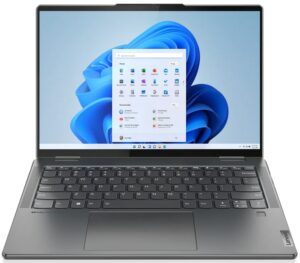


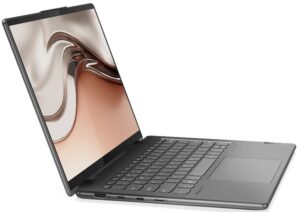
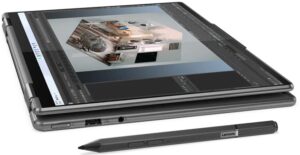
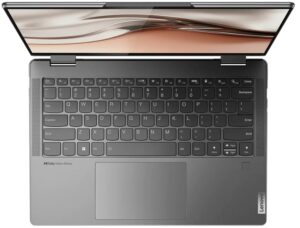

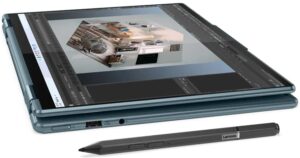
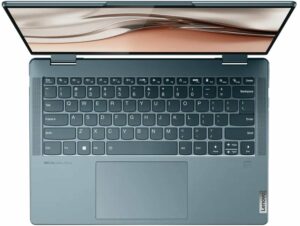
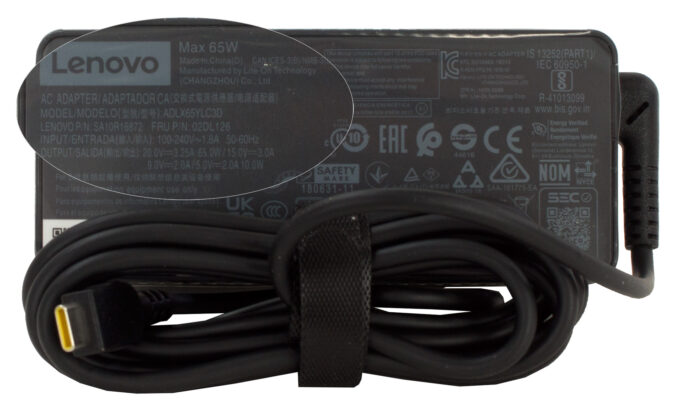

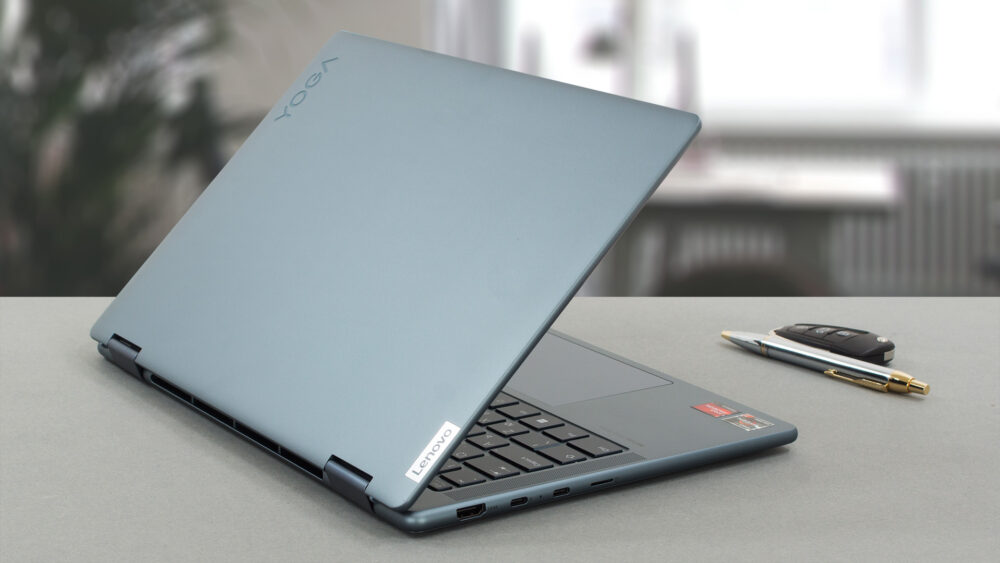

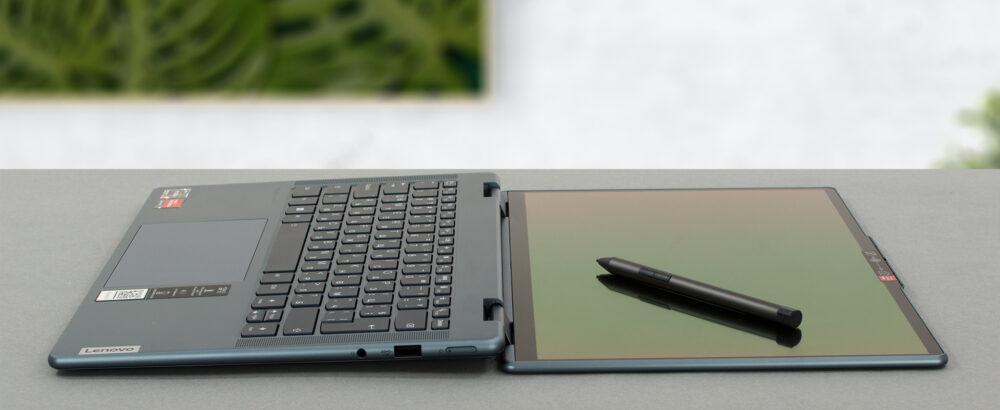





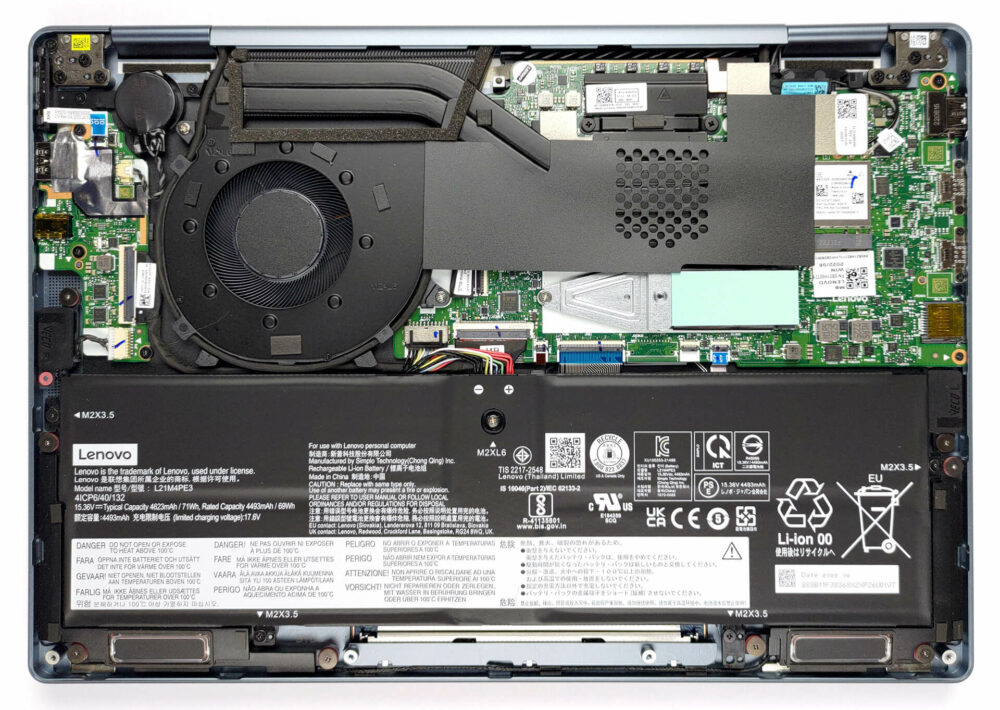
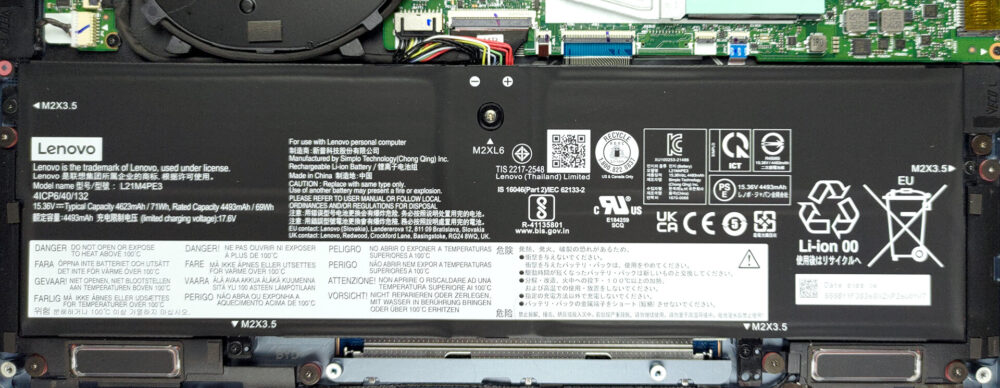
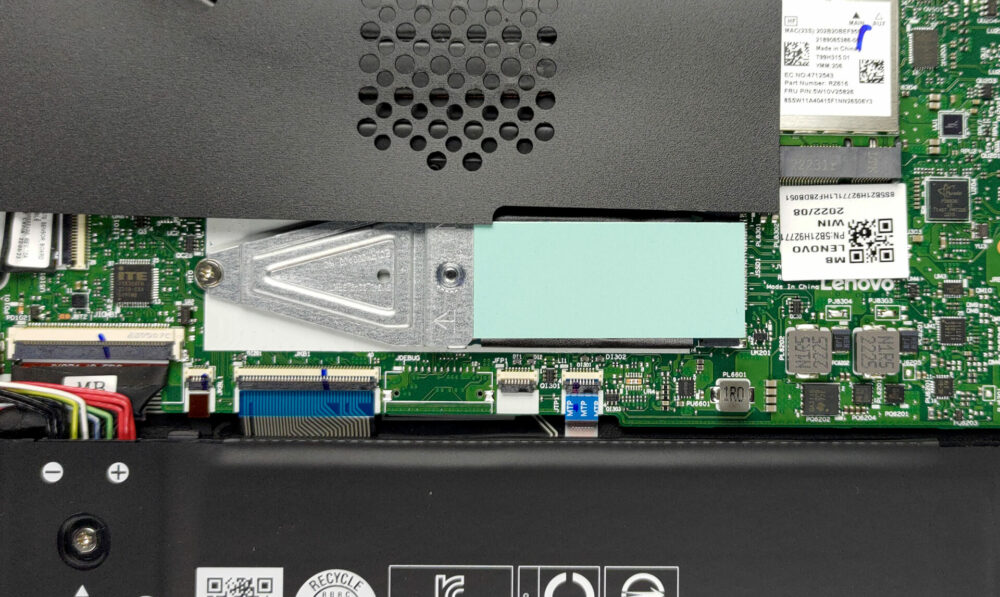
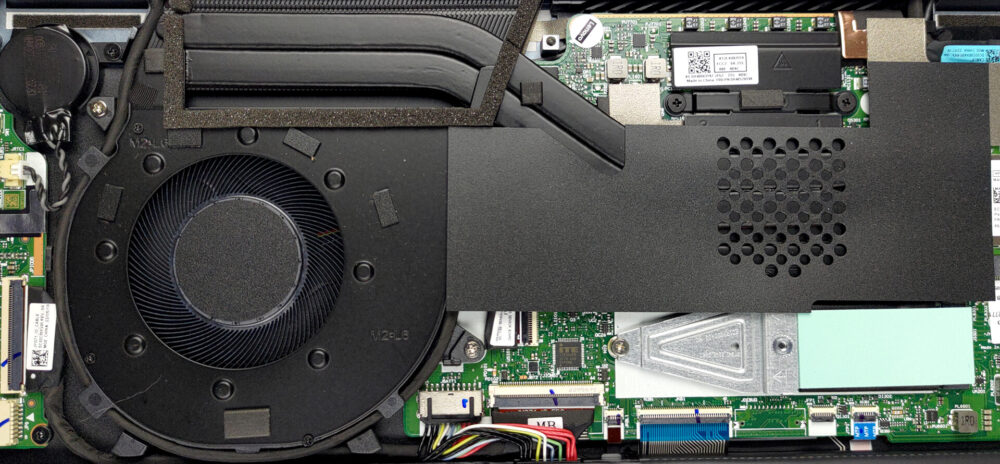

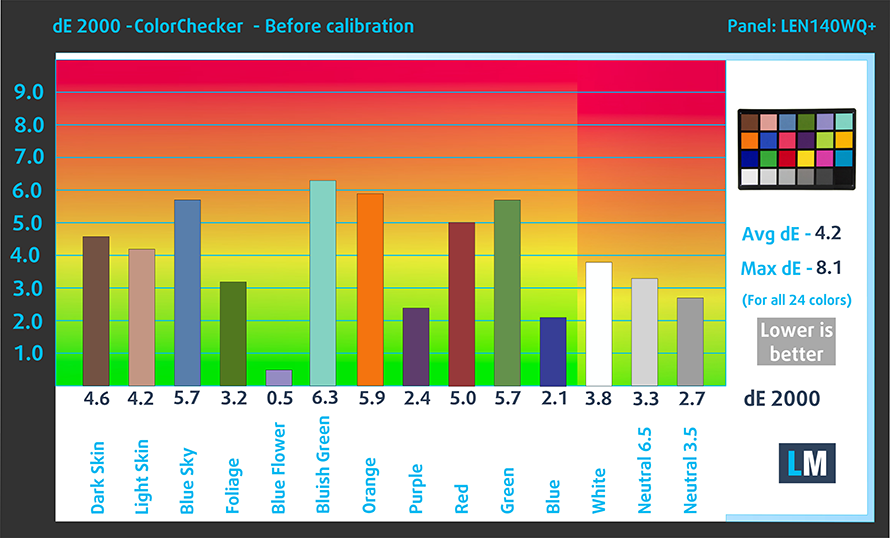
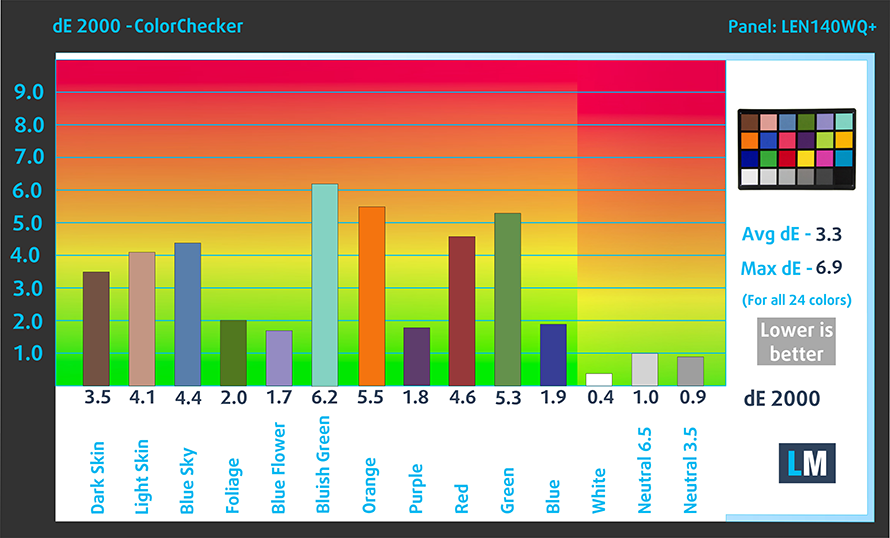
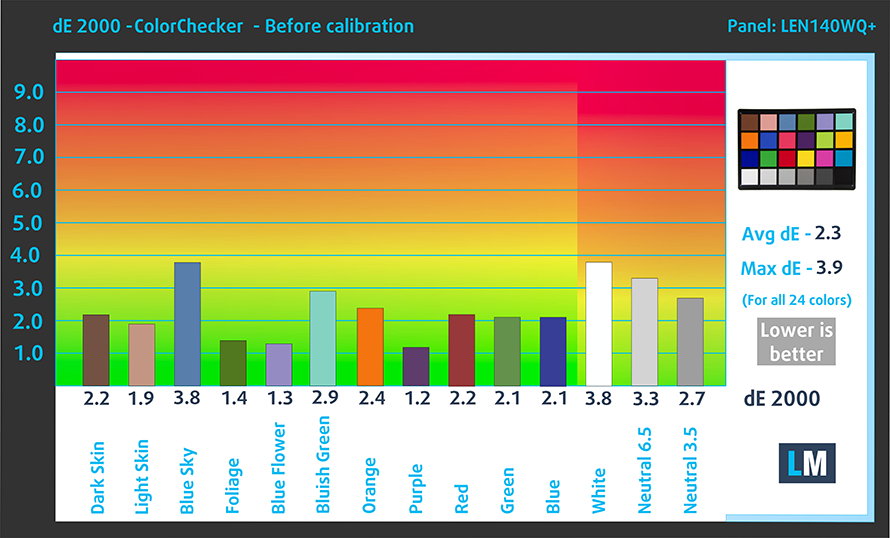
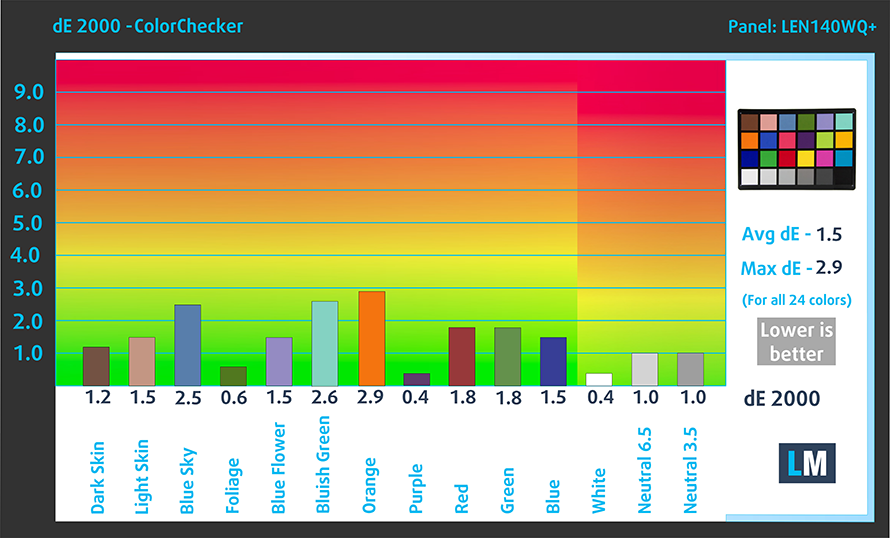



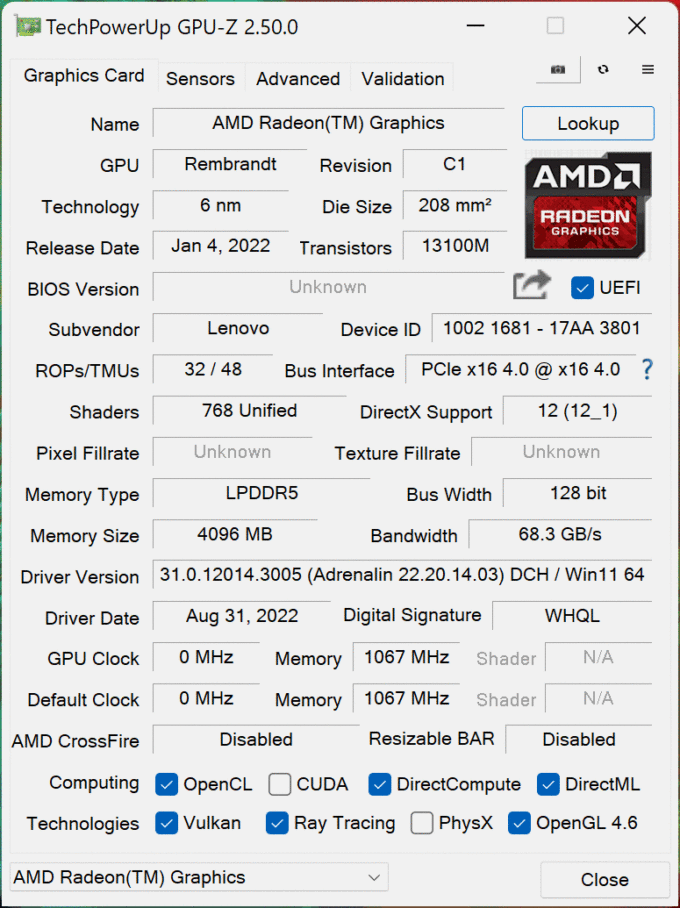








Agreed. Will purchase. Thank you.